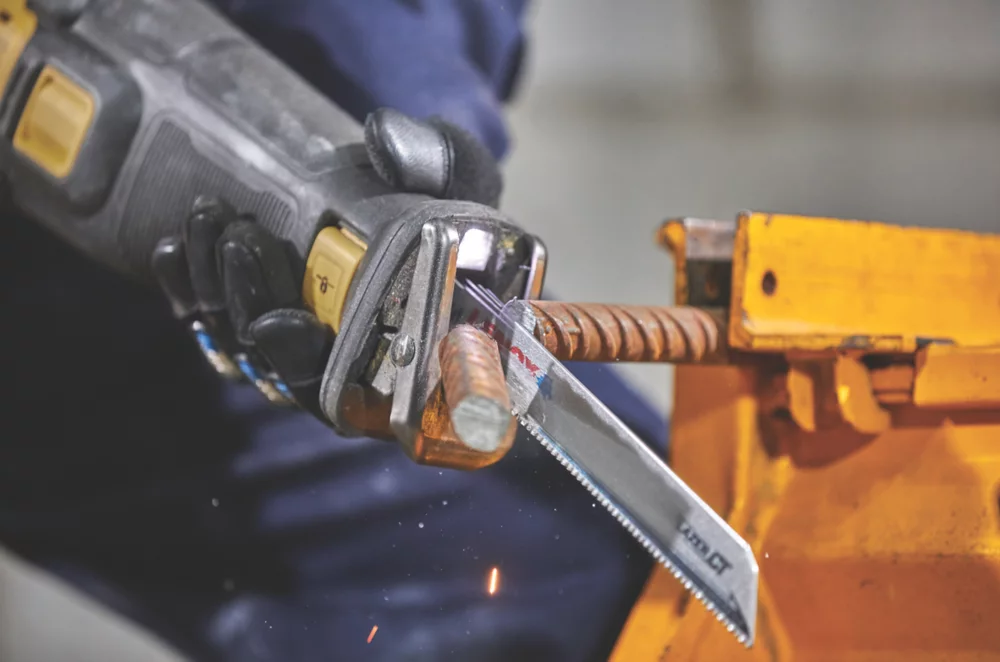Reciprocating saws are powerful tools that offer versatility in cutting through various materials. However, the efficiency and effectiveness of these tools heavily rely on the blades used. Choosing the right reciprocating saw blade for a specific task can significantly impact performance and results. In this comprehensive guide, we’ll delve into the world of reciprocating saw blades, offering insights into selecting the appropriate blade, understanding blade features, using them effectively, and maximizing their overall performance.
How Can You Define Reciprocating Saw Blades?
These nuances in reciprocating saw blades enable users to make informed choices based on the material being cut, the desired finish, and the specific demands of the task at hand.
Blade Material

High Carbon Steel: Known for its flexibility and affordability, high carbon steel blades are adept at cutting through softer materials like wood and plastics. These blades offer decent durability for general-purpose cutting tasks.
Bi-Metal: These blades combine the hardness of high-speed steel teeth with a flexible spring steel body. Bi-metal blades excel in versatility, making them suitable for cutting through a range of materials, including wood embedded with nails, metal, and other tough substances. They are a go-to choice for most professionals due to their durability and adaptability.
Carbide-Tipped: Offering unparalleled durability, carbide-tipped blades are designed to withstand highly abrasive materials such as masonry, cast iron, and stainless steel. While these blades are more expensive, their longevity and ability to maintain sharpness make them a cost-effective choice for heavy-duty applications.
Blade Length and Teeth Per Inch (TPI)
Blade Length: Longer blades are advantageous for reaching into deeper or harder-to-access spaces, making them suitable for demolition work or cutting through thicker materials. Shorter blades, on the other hand, provide enhanced maneuverability and control, making them ideal for precision cuts and tasks in confined spaces.
Teeth Per Inch (TPI): The number of teeth on a blade determines its aggressiveness and cutting efficiency. Blades with fewer teeth per inch are more aggressive, resulting in faster cuts through softer materials. Conversely, higher TPI blades yield smoother cuts in harder materials, offering precision and reduced splintering.
Blade Shape
- Straight Blades: These are the standard blade type, offering versatility for various cutting tasks.
- Tapered Blades: Designed to make plunge cuts more manageable and provide enhanced control and precision.
- Hooked Blades: With a curved shape, these blades are adept at cutting in tight or awkward spaces, allowing for unique angles and cuts.
How Can You Choose the Right Blade?
Determine the material you’ll be cutting (wood, metal, plastic, or composite) to select the appropriate blade material. Thicker materials require blades with fewer teeth for efficient cutting, while thinner materials benefit from blades with more teeth for smoother cuts.
Use a higher TPI for finer cuts in metals or harder materials and lower TPI for faster cuts in softer materials.
Using Reciprocating Saw Blades Effectively
Wear appropriate safety gear, including goggles and gloves, to protect against debris and potential hazards. Ensure the material being cut is clamped or secured firmly to prevent movement or accidents.
Adjust the saw’s speed and apply consistent, controlled pressure for optimal cutting and blade longevity.
Maximizing Performance and Maintenance
Let the blade do the work; forcing it can cause overheating and premature wear. Clean blades after use to remove debris and prevent corrosion. Store them properly in a dry environment to maintain sharpness.
High-quality blades may cost more initially but offer better durability and performance, saving money in the long run.
Conclusion
Reciprocating saw blades are indispensable accessories that significantly influence the efficiency and precision of these powerful cutting tools. Choosing the right blade for the task at hand, understanding its features, using it effectively, and maintaining it properly are key to achieving optimal performance and extending the blade’s lifespan.
By following the guidelines outlined in this ultimate guide, users can harness the full potential of reciprocating saw blades across a wide range of cutting applications.
